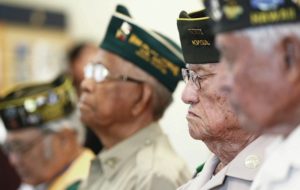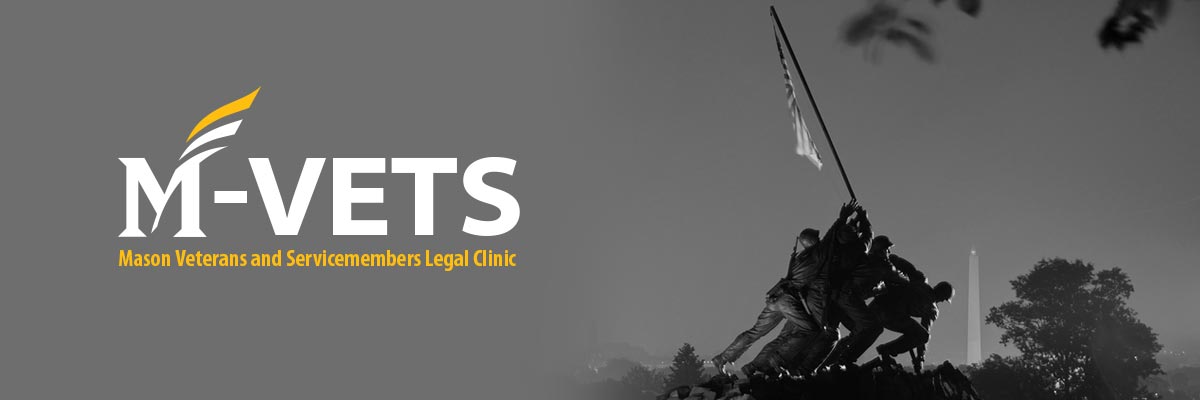
By Summer 2019 M-VETS Student-Advisor Jacquelyn Cabada Branscomb
History
In 1941, President Franklin Roosevelt put out a call for Filipinos to fight alongside the American forces against the Japanese invasion of the Philippine Islands.[1] During that time, the Philippines was still a commonwealth of the United States. Under this Presidential Military Order on July 26, 1941, military forces of the government of the Commonwealth of the Philippines were in service to America under the United States Armed Forces of the Far East.[2]
With that call, at least quarter-million Filipinos joined the American forces under four groups: regular Philippine Scouts, the new Philippine Scouts, Guerrilla Services, and the Philippine Commonwealth Army.[3] They were promised, by President Roosevelt, full veterans’ benefits to those who enlisted.[4] Many walked side by side American Forces in the Bataan Death March. Many fought off the enemy on Corregidor. Many were prisoners of war or missing in action. And as American forces retreated as Japan took over the islands, and after General Douglas MacArthur stated that he “shall return,” Filipinos continued to fight on the American territory of the commonwealth of the Philippines. Eventually, the United States did return as promised and Filipinos and US fought side by side again until the end of the war.
Unfortunate Reversal
In 1946, after the war ended, and under President Harry S. Truman, the United States passed what are called the Rescission Acts of 1946. These Acts deemed that the service of certain Filipino veterans is NOT to be considered active service for the purposes of nearly all American laws.[5] With the approval of those acts, thousands of Filipinos who fought off Japanese forces on the American commonwealth was stripped of their label as veteran and of the benefits promised by President Roosevelt. This unfortunate reversal is recognized by the federal government in the Filipino Veterans of World War II Congressional Gold Medal Act of 2015.[6]
Codified at 38 USC § 107, the Rescission Acts, still in effect today, states that “service before July 1, 1946, in the organized military forces of the Government of the Commonwealth of the Philippines, […] pursuant to the military order of the President dated July 26, 1941, […] shall not be deemed to have been active military, naval, or air service for the purposes of any law of the United States conferring rights, privileges, or benefits upon any person…”[7]
Veterans who were granted benefits prior to the Rescission Acts being enacted in 1946 can receive their full benefits.[8] However, those who did not claim their benefits are restricted by the law. The Rescission Acts provide for some benefits such as service-connected disability or death benefits, dependency indemnity compensation survivor benefits, and burial benefits.[9] However, the law limits payment to 50 cents on every dollar.[10] Furthermore, receipt of benefits also depends on whether the beneficiary resides in America or in the Philippines.[11] The US Department of Veterans Affairs (VA) also provides benefits for survivors of Filipino veterans but they are also limited.[12]
Course Correction?
Seventy-three years later, these WWII vets are in the upper reaches of their 90s. They have seen several attempts to correct the errors that have kept them from benefits typically conferred on American war veterans. Many attempts have failed.
As part of the American Recovery and Reinvestment Act of 2009, President Barack Obama authorized a program called the WWII Filipino Equity Compensation (FVEC) Fund on February 2009. [13] The VA was appropriated $198,000,000 for lump-sum payments of $9,000 for non-US residents or $15,000 for US Residents.[14] There was a one-year window to apply and the VA received 42,755 applications.[15] As of January 2019, 18,983 claims were granted, and 23,772 claims denied. According to the VA, there is still approximately $56,000,000 available in the FVEC fund.[16] Some veterans have had issues with the required documentation. Thousands of official military personnel files were destroyed in a 1973 fire at the National Personnel Records Center.[17] The Army had an 80% estimated loss of files for personnel discharged between November 1, 1912 and January 1, 1960.[18]
On December 14, 2016, Congress passed, and President Barack Obama signed, Public Law 114-265, known as the Filipino Veterans of World War III Congressional Gold Medal Act of 2015.”[19] This act recognized the efforts of Filipino fighters during WWII and authorized the awarding of a single Congressional Gold Medal for all Filipino Veterans which should then be displayed in the Smithsonian Institution.[20] Copies can be sold to the actual Filipino veterans with funds going to the US Mint Public Enterprise Fund.[21] The ceremony was held on Wednesday, October 27, 2017.
Final Thoughts
There are only a couple thousand surviving veterans and even more immediate family members of surviving or deceased veterans that are waiting for the benefits they were originally promised in 1941. The treatment of these veterans and their families remain a stain on an otherwise friendly alliance between the United States and its former territory. Although the one-time funding provided as part of the stimulus package in 2009 and the conferring of the Congressional Gold Medal on the WWII Filipino Veterans was an honor, the urgent necessity for these aging vets is a comprehensive approach for the vets residing in both the United States and the Philippines. Although ensuring benefits are conferred properly and accurately is complicated, time consuming, and messy, it would seem to be the least we could do for a group of people who volunteered to risk their life for the protection of a valuable American property.
[1] https://www.cnn.com/2017/10/25/politics/congressional-gold-medal-filipino-wwii-vets/index.html
[2] 38 USC 107 note “Payments to Eligible Persons Who Served in the United States Armed Forces in the Far East During World War II” (a)(3).
[3] Id.
[4] https://www.cnn.com/2017/10/25/politics/congressional-gold-medal-filipino-wwii-vets/index.html
[5] 38 USC 107 note “Payments to Eligible Persons Who Served in the United States Armed Forces in the Far East During World War II” (a)(5).
[6] https://www.congress.gov/bill/114th-congress/senate-bill/1555/
[7] 38 USC 107(a)
[8] 38 USC 107 note “Payments to Eligible Persons Who Served in the United States Armed Forces in the Far East During World War II” (a)(5).
[9] 38 USC 107(a)
[10] 38 USC 107 note “Payments to Eligible Persons Who Served in the United States Armed Forces in the Far East During World War II” (a)(7).
[11] 38 USC 107 note “Payments to Eligible Persons Who Served in the United States Armed Forces in the Far East During World War II” (a)(6).
[12] https://www.benefits.va.gov/BENEFITS/factsheets/survivors/FilipinoSurvivors.pdf
[13] https://www.va.gov/centerforminorityveterans/fvec.asp
[14] Id.
[15] Id.
[16] Id.
[17] https://www.archives.gov/personnel-records-center/fire-1973
[18] Id.
[19] https://www.congress.gov/bill/114th-congress/senate-bill/1555/
[20] Id.
[21] Id.

